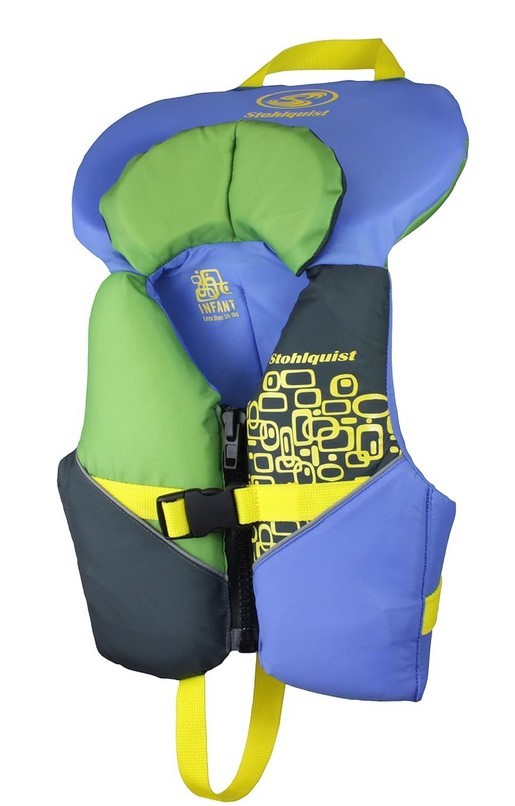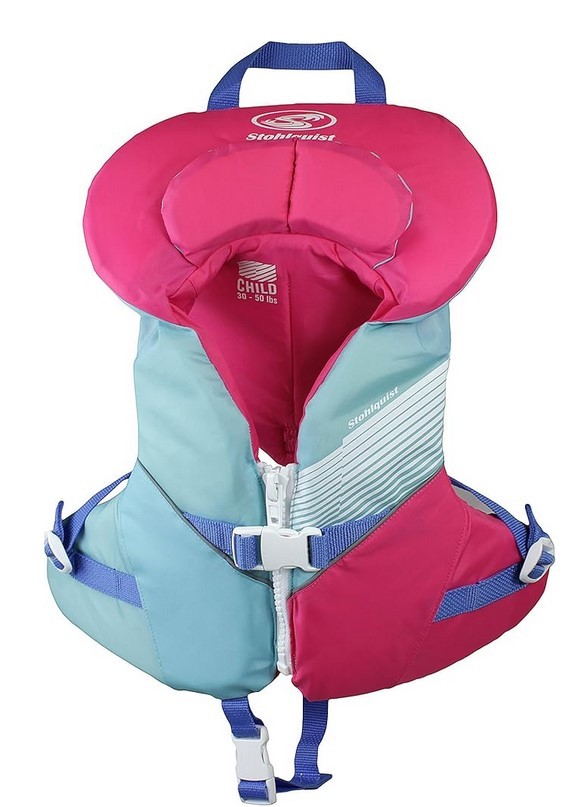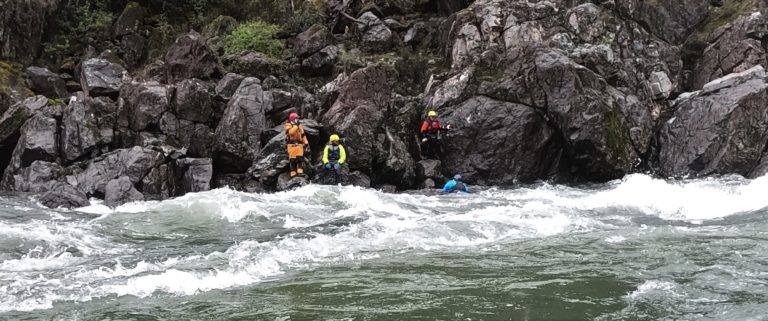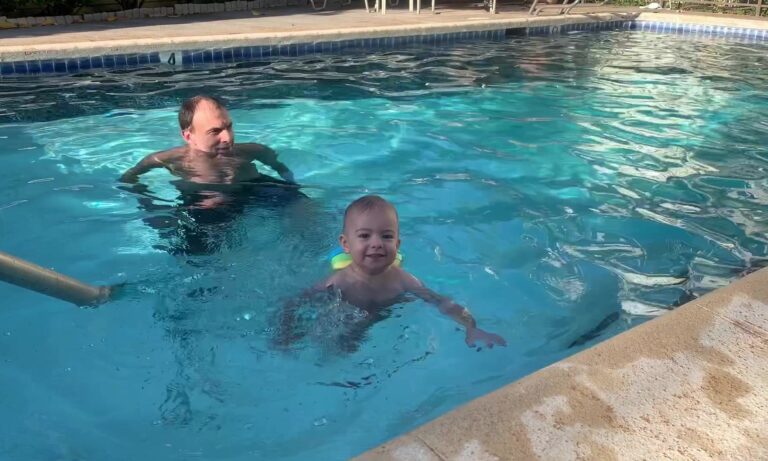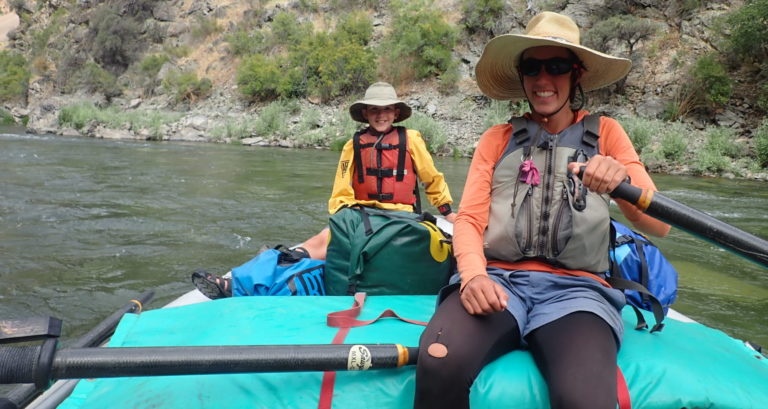The Stohlquist Infant Life Jacket is an excellent piece of gear for taking babies in the water. It fit our baby securely from birth and floated her well. We preferred it over floaties/water wings due to the PFD allowing for more natural arm movements and being a traditional life jacket design to float babies on their backs. (See our article on different kids flotation devices.)
We will discuss how the PFD fit our baby as she grew and how she responded to being in the vest. When she was around 10 months old we started doing activities that required her to use the life vest. When looking to purchase this vest be careful about purchasing the CHILDREN’s version of the Stohlquist vest as it looks almost identical.
Fitting the Baby’s PFD
The straps are well placed for comfort and function. On the back of the vest all three straps can be easily accessed to tighten or loosen the life jacket. The straps can adapt to a range of sizes and shapes of babies. Even when our baby was a newborn the straps had an ability to fit a much smaller infant than her. We liked the redundancy of the zipper and the front buckle. If the zipper broke or unzipped the crotch strap and chest buckle would still hold the baby well.
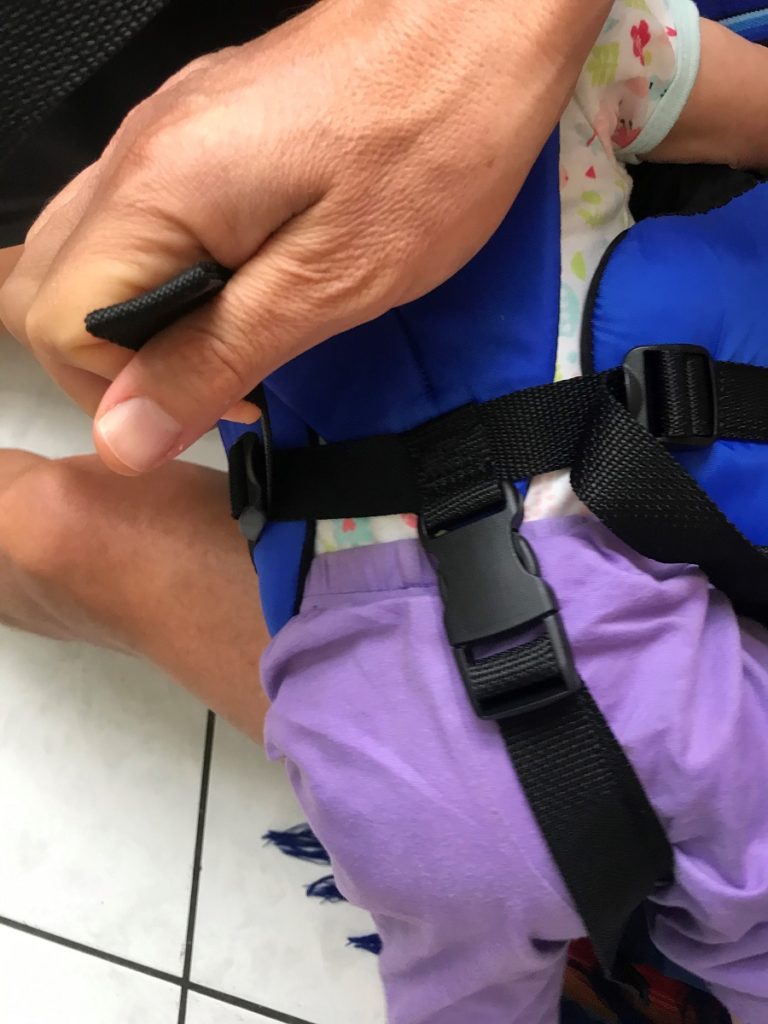
Infant PFD Flotation
This US Coast Guard approved vest is a high-float PFD (Personal Flotation Device) with 7 pounds and 6 ounces of flotation, even when maxed out with a 30 pound infant. Our biggest complaint was the vest being too bulky for her to move in it until she was almost walking and then if she fell she couldn’t get back up.
This vest has over twice as much flotation for the weight specifications as an adult vest would have. The equivalent infant vest built for a 210 pound adult would have over 51 pounds of flotation (whereas adult vests have 16 to 26 lbs of flotation). The life jacket flotation is also free of toxic PVC materials. Note that the life jacket states it “will turn only some children to a face-up position.”
Testing the PFD on a Newborn Baby
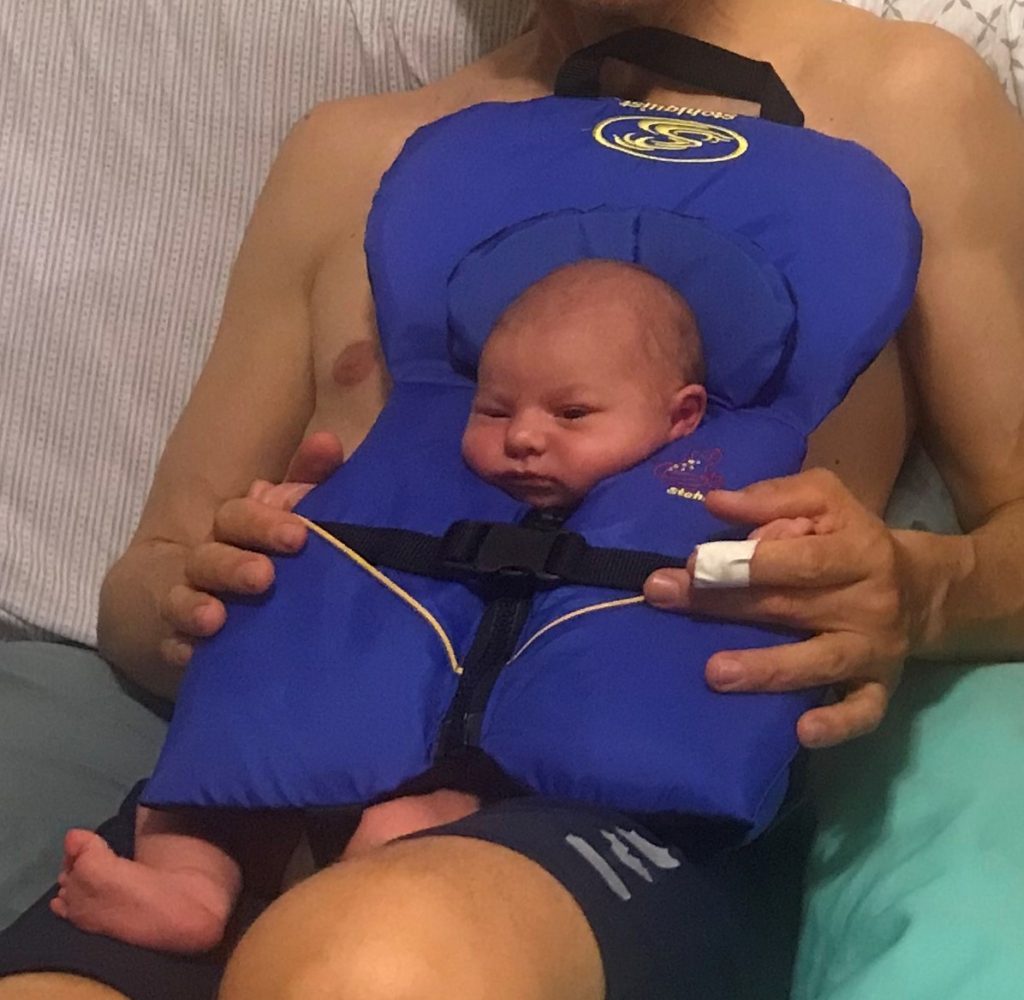
A few weeks after our baby was born we tried the PFD on her, curious to see how it fit. At the time she was just over 9 lbs at the time and 22 inches long. The PFD fit her surprisingly well (see the photo above). Our daughter struggled to move her head and appeared unhappy in the vest.
Testing the Life Vest on a Three-Month-Old Baby
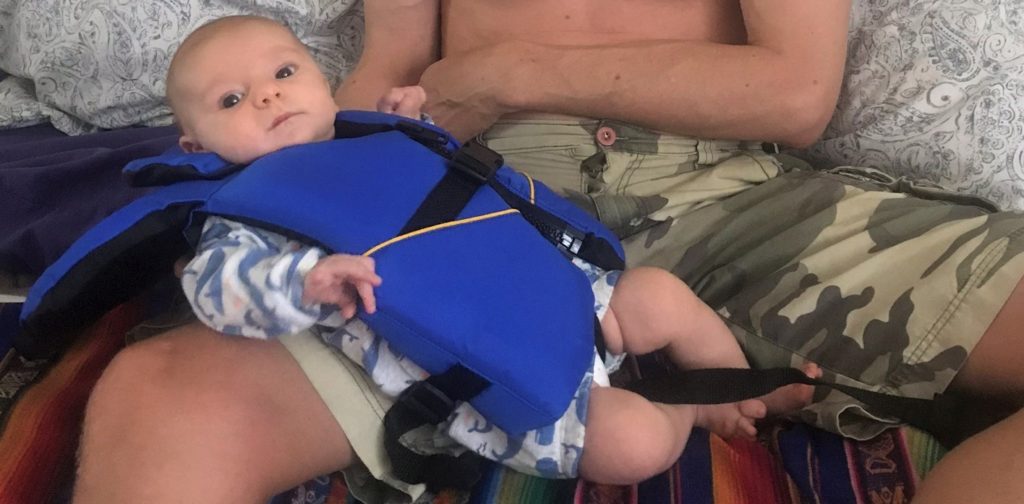
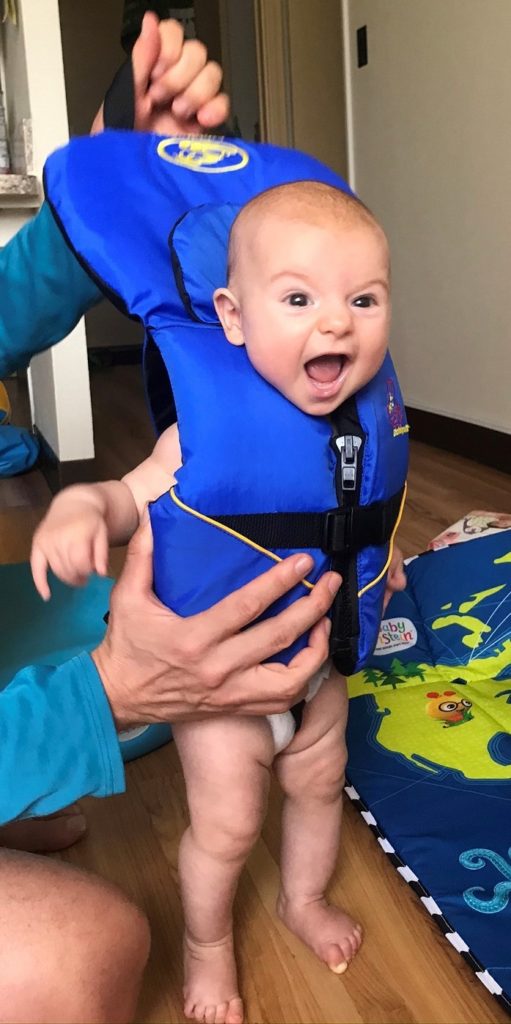
At around 3 months we tried it on again. Baby was now around 11 lbs and 26 inches long. She was much happier in the life jacket this time and we could see doing an activity with her in it.
We tested the grab loop on the pillow. With the crotch strap firmly attached and the side straps tightened, the vest held its position well. The most amazing part was she seemed to enjoy this activity.
We noted that there is so much flotation on the front of the life vest that it was not possible for her to sit while wearing the vest.
Water Testing the Life Jacket
When she was a little over 5 months old (14.5 lbs and 27.5 inches) we moved started testing the vest in our bath tub. Within days we realized she loves floating around on her back in her vest (as she got older she didn’t like floating on her back nearly as much). She was stable on her back and it was difficult to get her to roll onto her side.
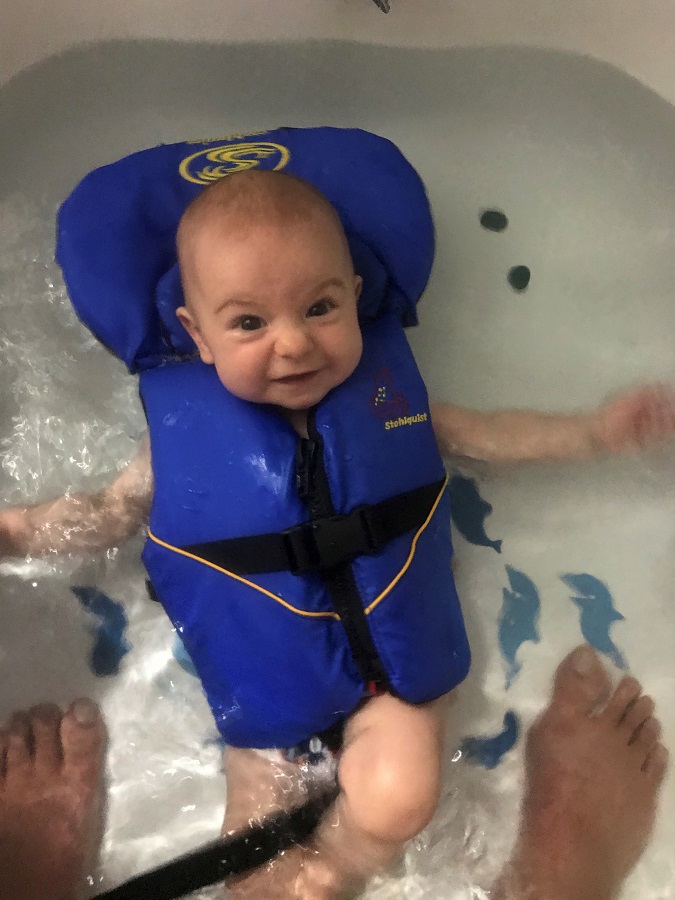
It was awkward for her to try to stand since the front flotation went down to her mid-thighs. She still couldn’t sit with it on. Our daughter did not like being placed on her stomach in the PFD and she usually likes tummy time. After the float test, I would trust our baby’s life in that vest and she’d be happy floating in the vest for a long time. However, I’m not sure how long there would be smiles while in the life jacket outside of the water.
Infant At Ten Months
At around ten months (18 lbs and 30 inches long) we found our baby moved better in the vest and started taking her on adventures that required a PFD. During our first mini kayaking expedition she went a couple hours happily in the vest. She was much more comfortable being on her stomach in the life jacket as can be seen in the video below. The vest would work well for whitewater rafting and other water sports.
PFD in Action (See Video Below)
Specifications:
Stohlquist Infant US Coast Guard Approved Type II PFD
Floation: sea level buoyancy of 7 lbs. 6oz.
Size: up to 30 lb infants and toddlers
Type II PFDs will turn only some children to a “face-up” position.
PVC-free, built with Gaia foam
Cost: $50 to $60
***Stohlquist also makes a Child’s PFD for kids from 30 to 50 lbs that is the same design with an extra pound of flotation.
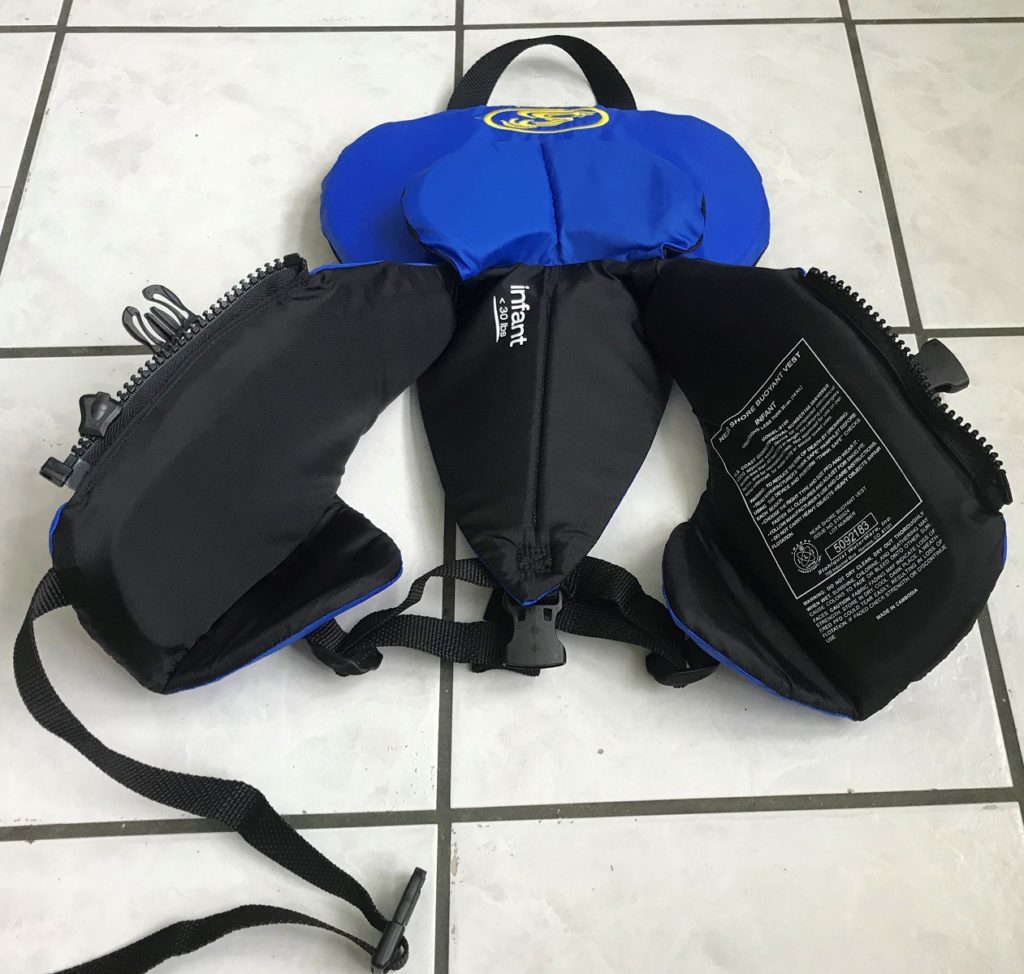
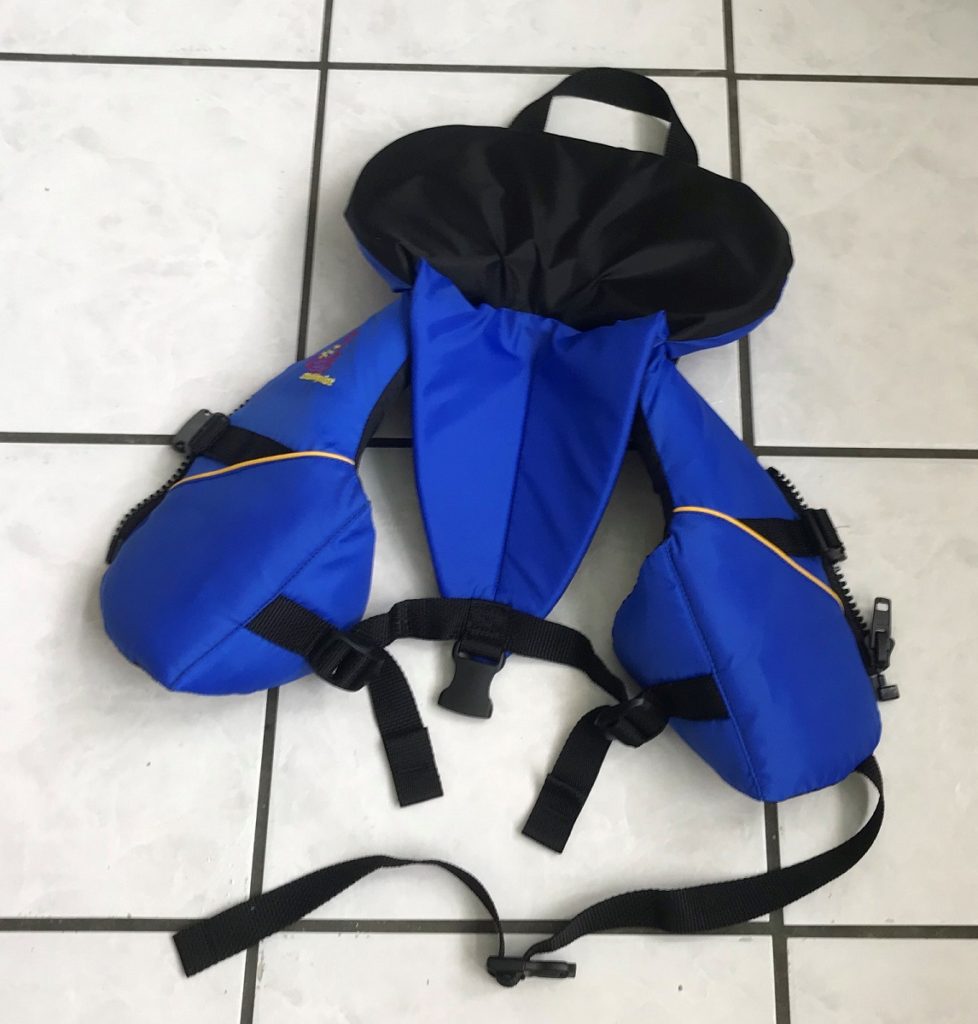
Concluding Thoughts
Stohlquist’s infant lifejacket is well made and designed. It secures tightly and floats a baby high in the water. Once an infant is on her back she will be stable. This appears to be the best baby PFD on the market.
For smaller child less than a year old (less than 20 lbs) we would be recommend starting with short activities to ensure the baby’s comfort in the life vest before trying longer trips. Please contact us if you have any questions.
Support this Site By Using the Link Below to Purchase Your Infant Lifejacket through Amazon
Looking for something else to read, check out our article on baby carriers for hiking and around town.
